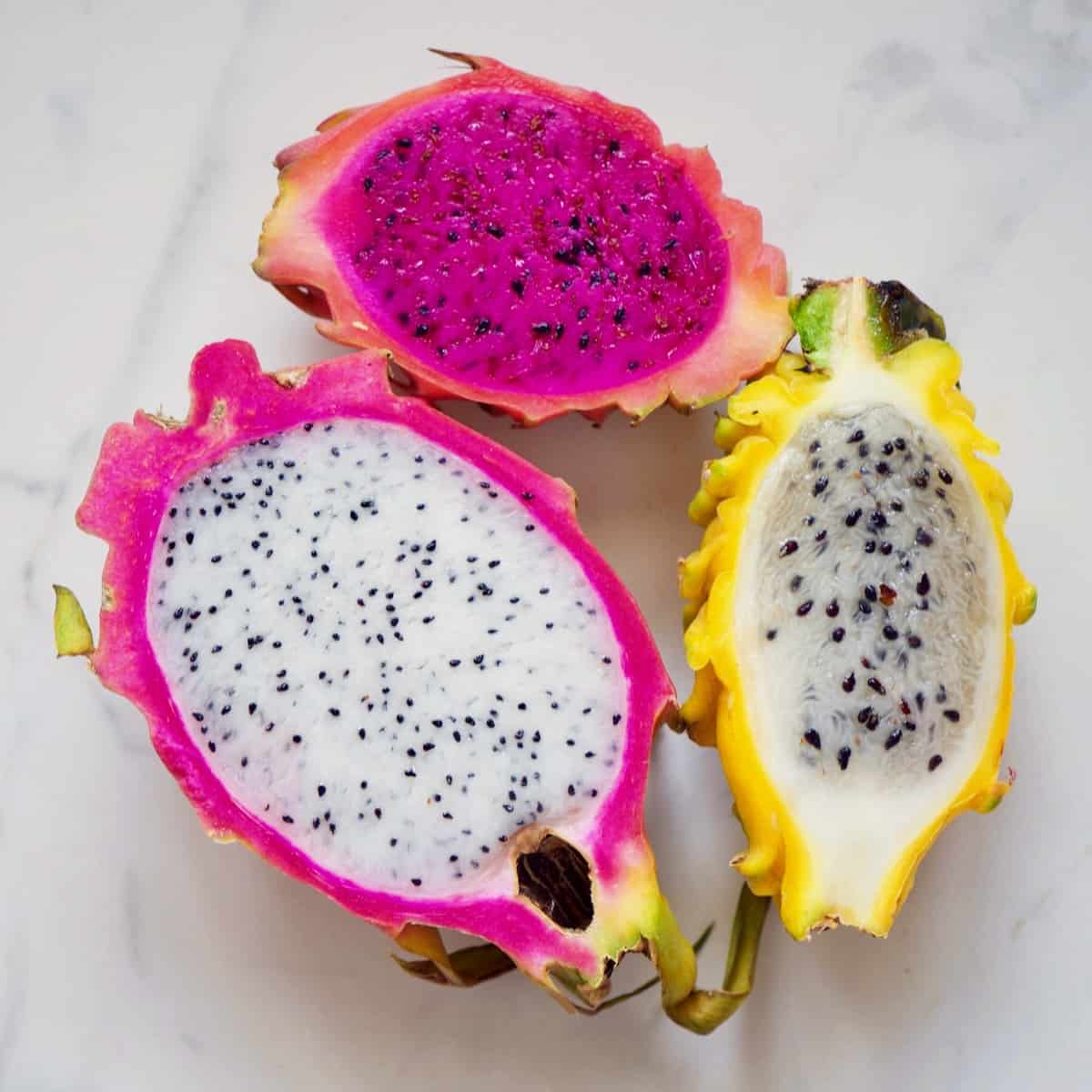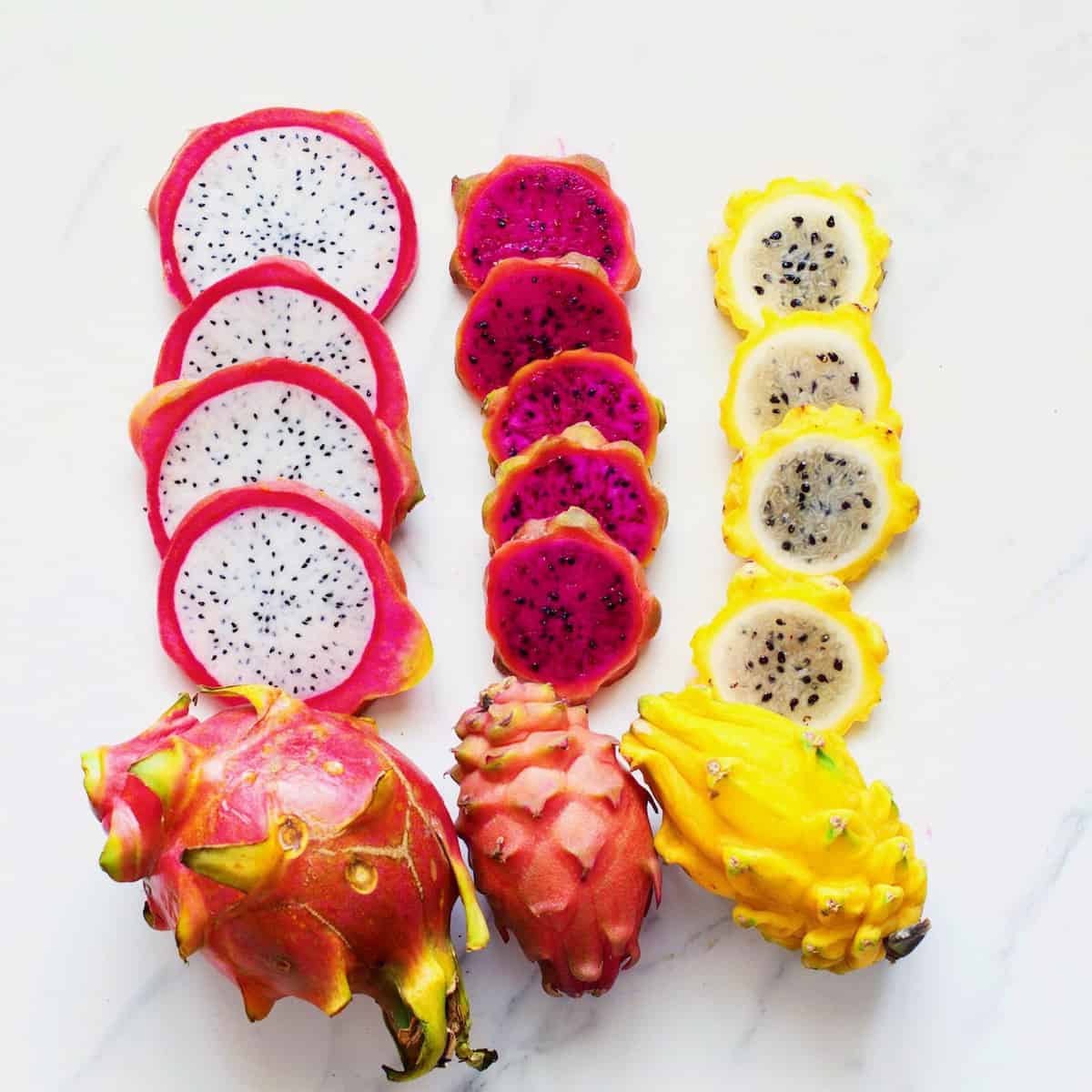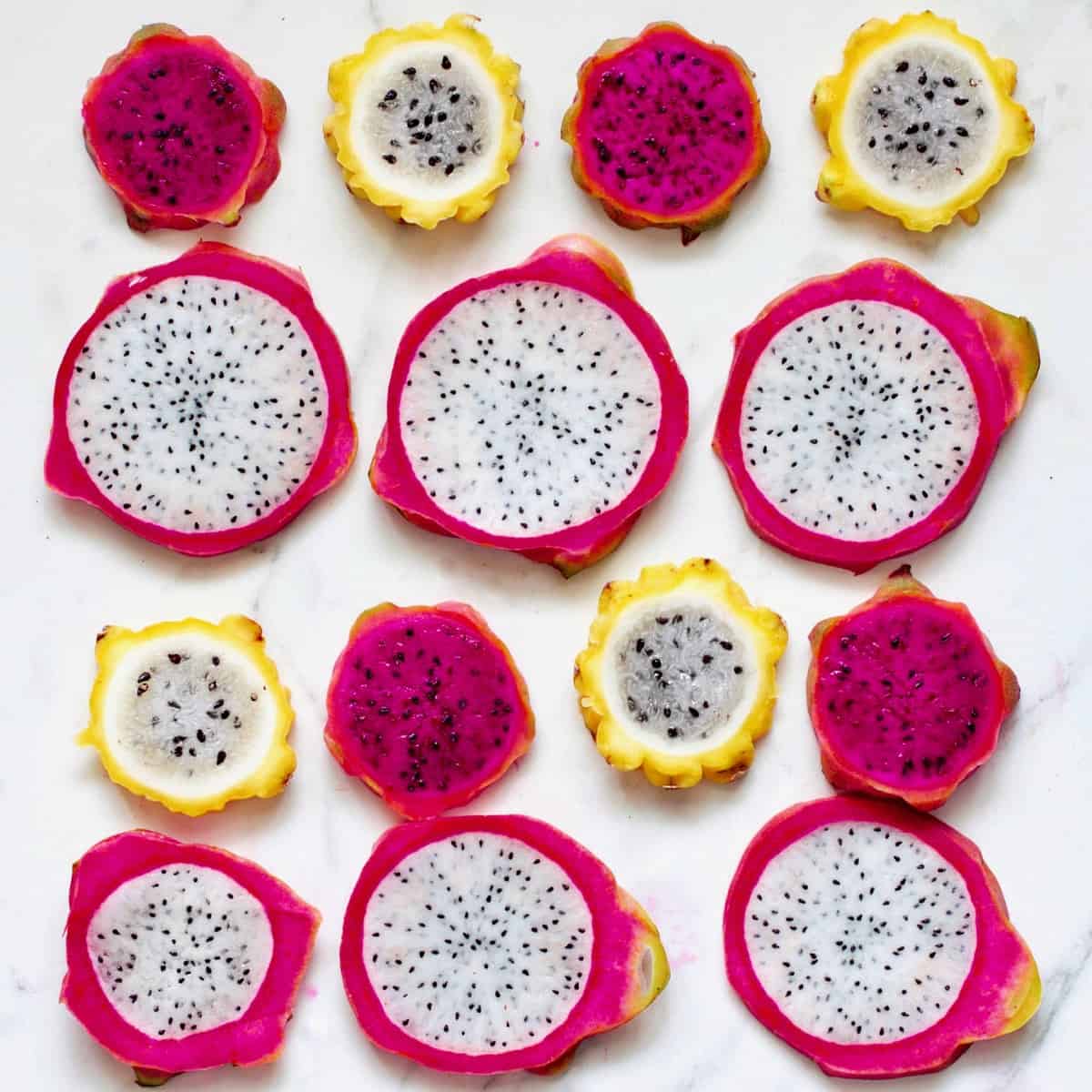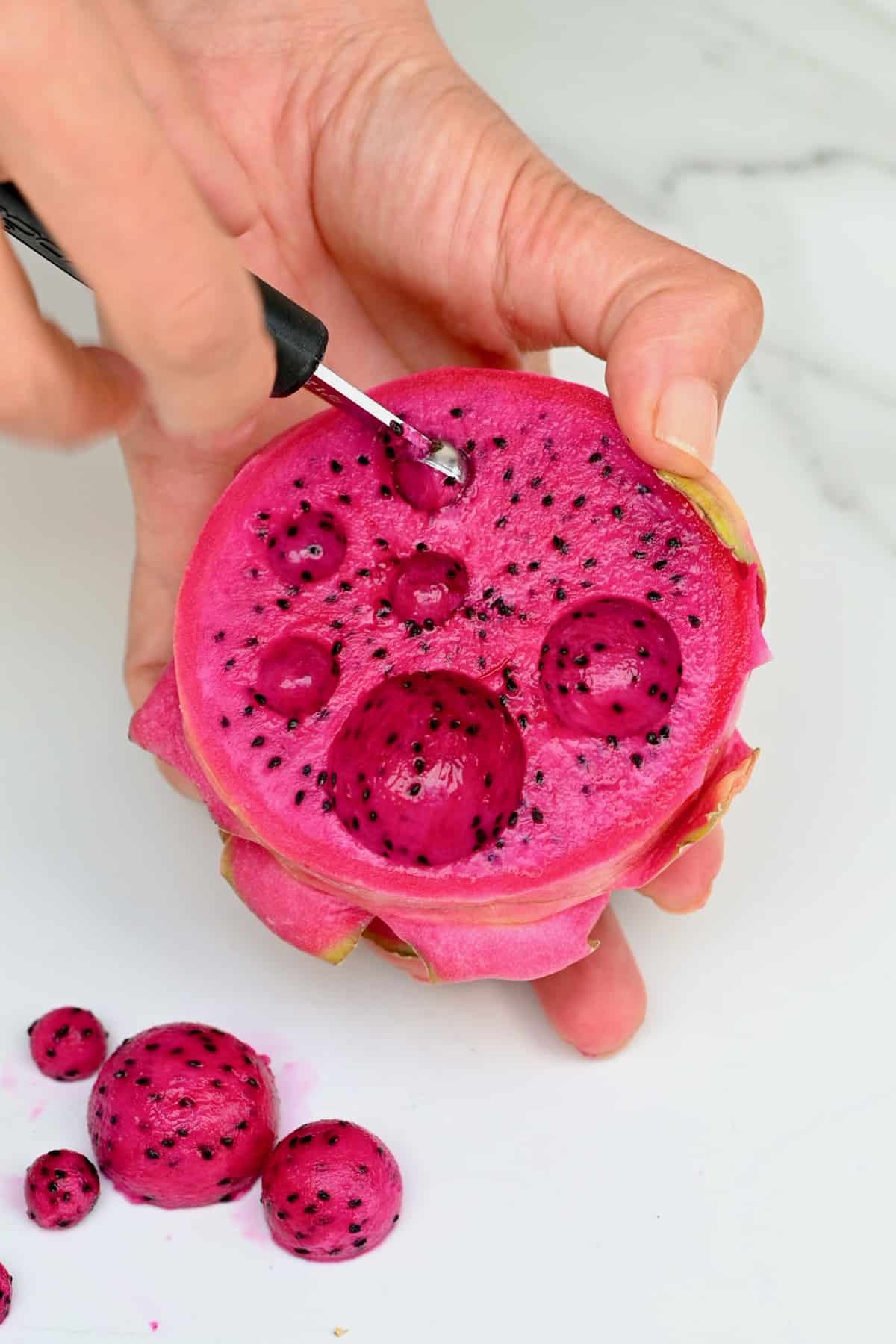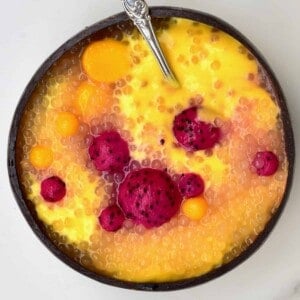With its gorgeous skin and unique flesh, dragon fruit is a delicious tropical fruit packed full of antioxidants, vitamin C, and fiber. Originating from Central America and Mexico, where it’s known as “pitaya” or “strawberry pear,” there is a huge variety of dragon fruit types to discover. Read on to learn everything you need to know about this beautiful fruit.
Types of dragon fruit
Most commonly, there are two kinds:
White Dragon Fruit: The most famous. With its vibrant pink skin, white flesh, and black seeds, this is one of the classic kinds of dragon fruit. Available more widely, it has a sweet taste – somewhere crossed between a pear and a kiwi!
Pink Dragon Fruit: With a darker rust-colored skin and rich, deep pink flesh inside, a pink dragon fruit has a similar taste and texture to a kiwi. It’s also prone to staining your fingers when you eat it because of the pigment of its flesh.
But there are also a few lesser-known dragonfruit types:
Yellow Dragon Fruit: Its insides look very similar to a white dragon fruit, but it has a vibrant yellow skin instead of pink. You’re more likely to find these in places like Colombia and Peru and its flesh has a richer and sweeter taste than the classic one.
Sour Dragonfruit: Perhaps the least common outside of Central America, it grows in dryer areas. With peachy-red skin and bright pink flesh with black seeds, it’s juicy and has a slight nuttiness, thanks to the seeds.
How to cut dragon fruit
Place the dragonfruit on a chopping board. Using a sharp knife, slice down the middle of the fruit, lengthwise. Then, using a spoon – I find a serrated spoon helps best here – press down into the flesh of the dragon fruit and scoop it out from each half. You can also chop them with the skin still on into rounds, wedges, or slices, depending on how you want to use them.
How to eat dragon fruit
The dragon fruit flesh should come out all in one go – just like you would scoop out the inside of a mango or kiwi. From there, you can slice it however you like to enjoy it. I like slices, wedges, and chunks. Also, I often use a melon baller to create perfect spheres for decoration. You can add your dragon fruit to any fruit recipe you like. Mix it in with a fruit salad, use it to add color to smoothie bowls, decorate fruit punch, or add to your favorite desserts for extra goodness. And just like other tropical fruits like mango or pineapple, dragon fruit is a surprisingly good pairing with fish – try it with chilean sea bass, halibut, or mahi mahi. If you try any dragon fruit types, let me know how you like them in the comments below. I’d love to see your recipe recreations – tag me on Instagram @Alphafoodie!



